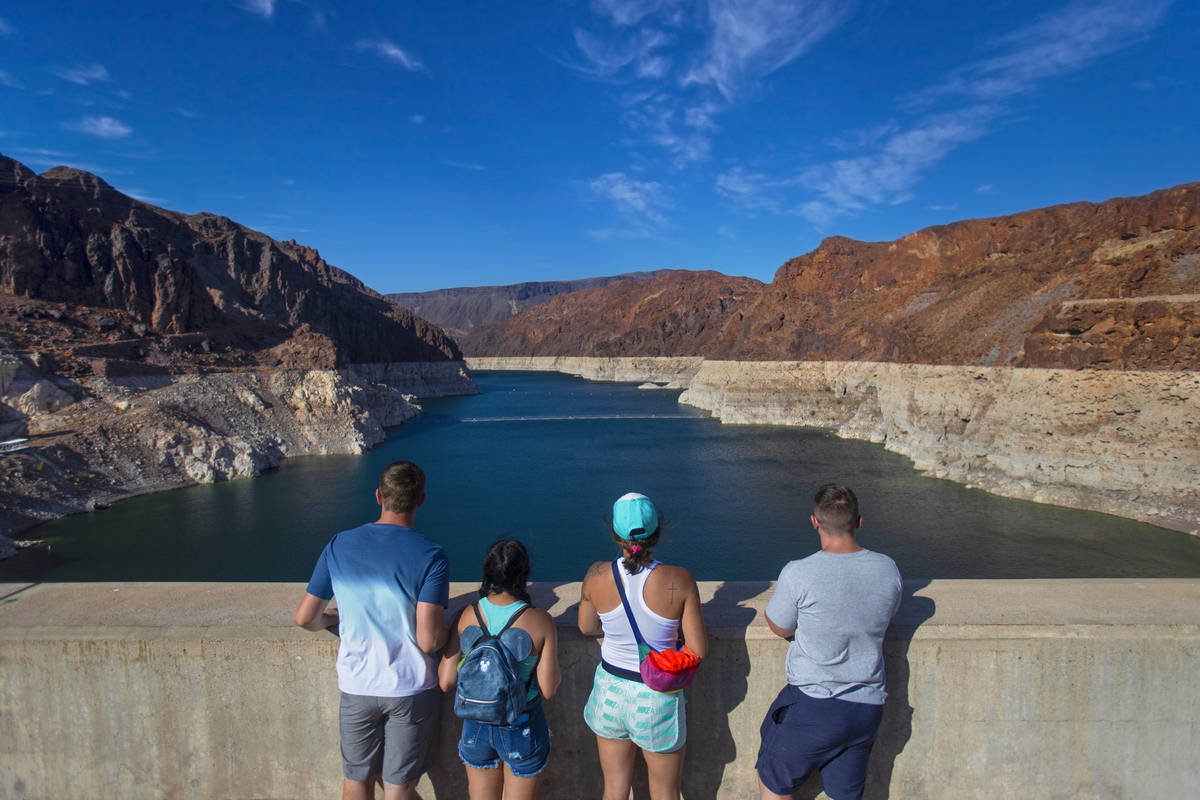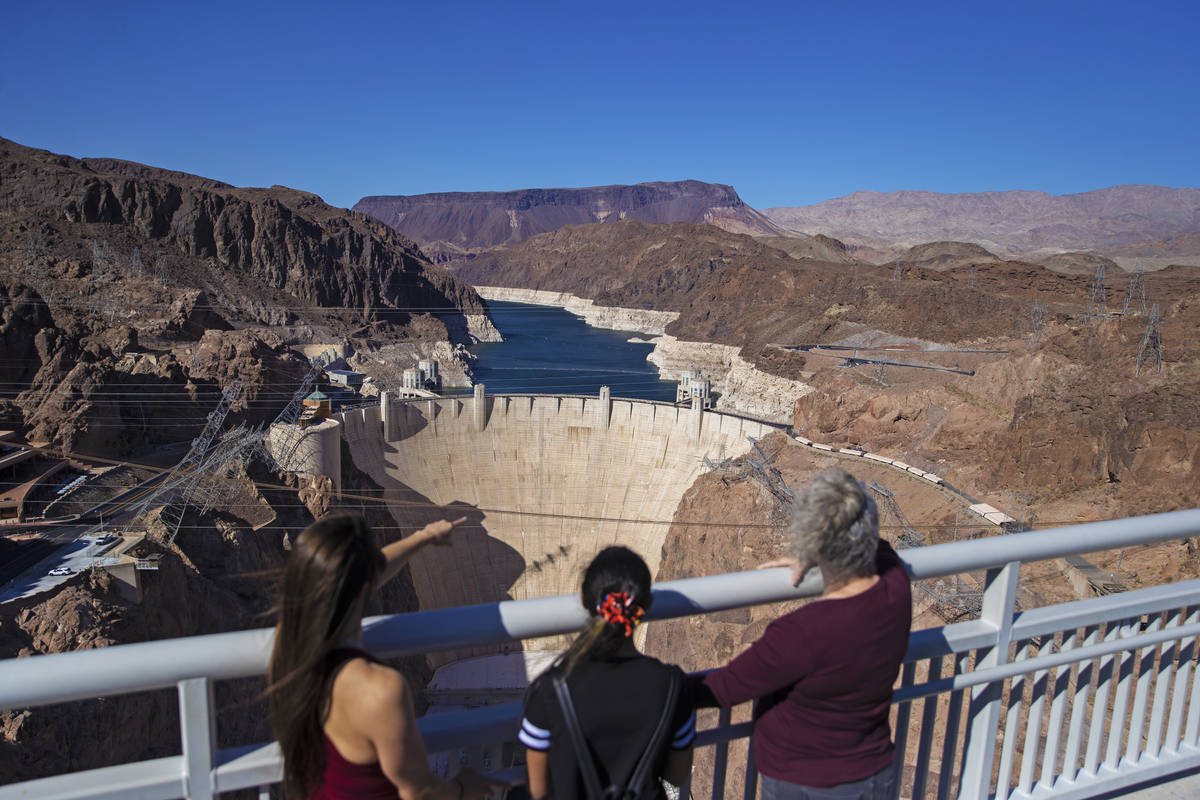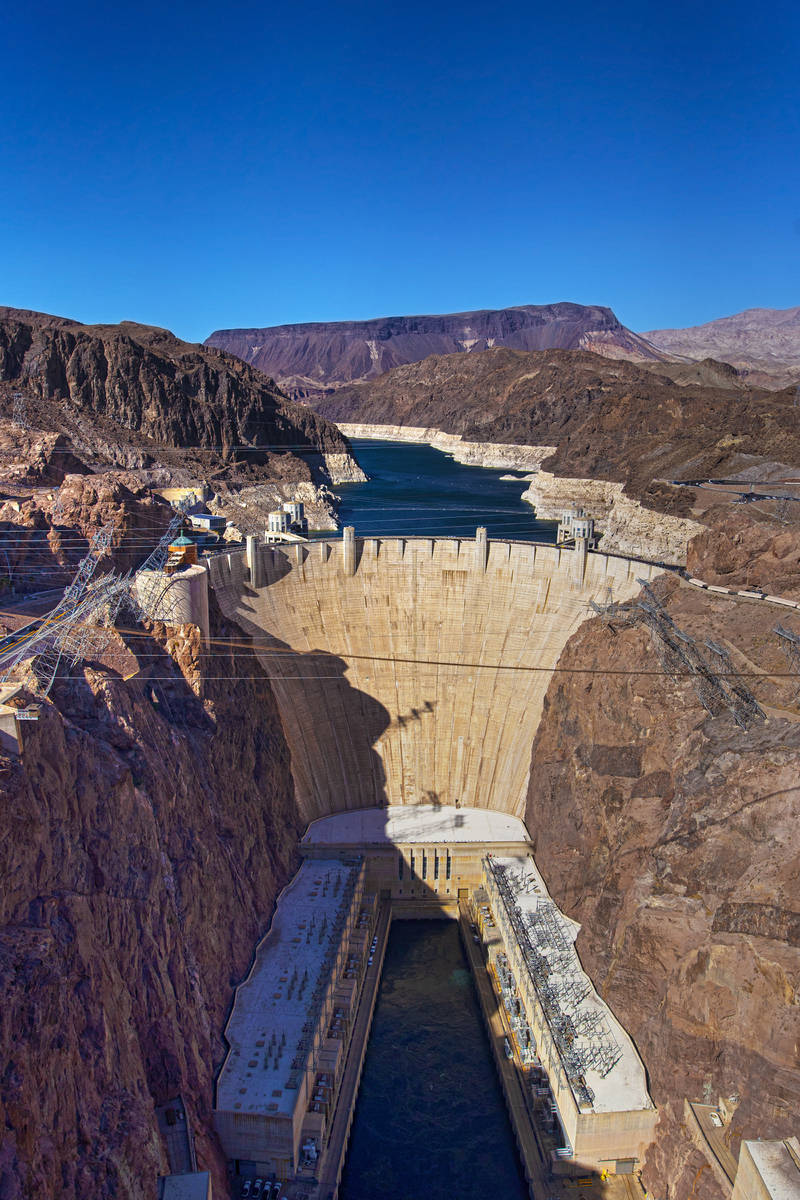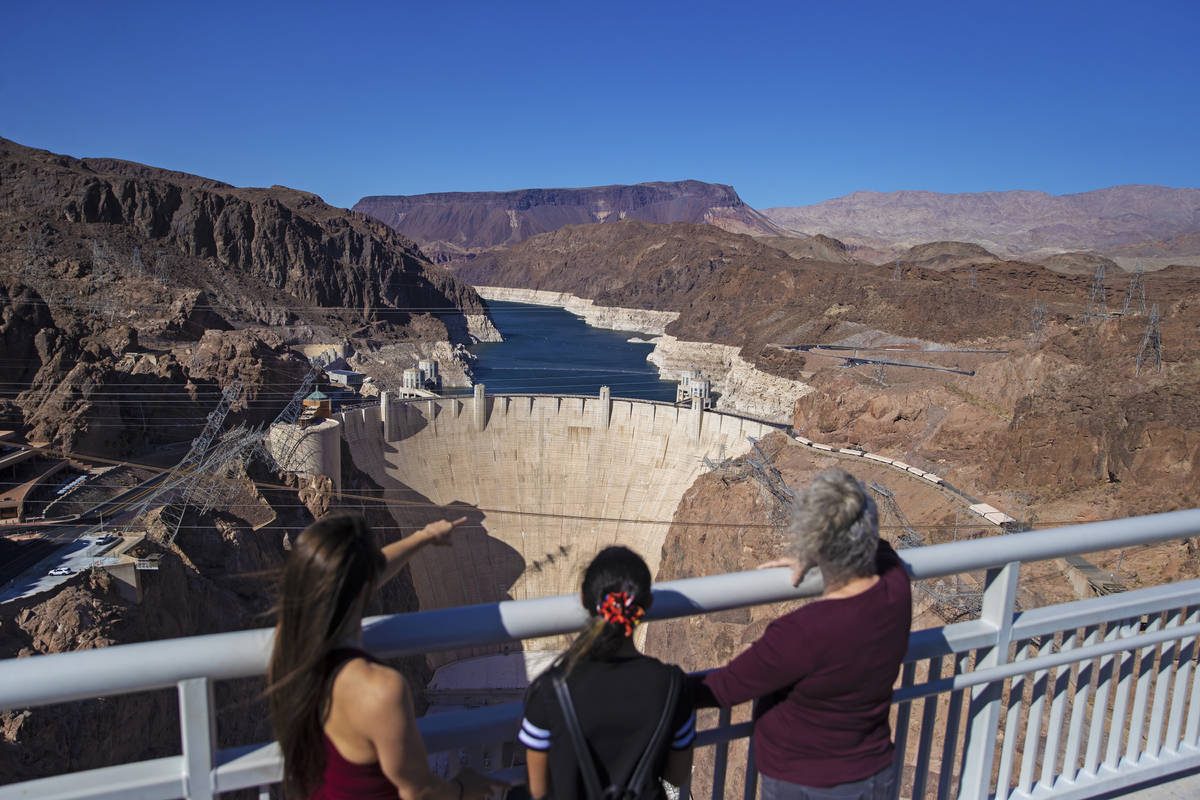Lake Mead projected to match lowest water level in history this week
Lake Mead’s water level this week is projected to match its lowest point since the reservoir was formed in the 1930s, federal officials said Tuesday.
U.S. Bureau of Reclamation spokeswoman Patti Aaron said projections show Lake Mead’s water level reaching an elevation of 1,071.61 feet on Thursday, matching the record low set on July 1, 2016.
And the lake level decline isn’t projected to stop there.
“We expect it to keep declining until November,” Aaron said.
Lake Mead is barreling toward its first federally declared water shortage, a product of a decades-long drought that has left the Colorado River parched. About 90 percent of Southern Nevada’s water comes from Lake Mead.
A shortage declaration would be made if the Bureau of Reclamation water level projections in August show the lake level below 1,075 feet at the beginning of next year.
Under a shortage, Nevada would have its annual 300,000 acre-foot allocation of water from the river slashed by 13,000 feet. That reduction would come in addition to an 8,000 acre-foot contribution Nevada agreed to in 2019 in the event Lake Mead’s water level dropped below 1,090 feet, as it has.
One acre-foot of water is about what two Las Vegas Valley homes use over the course of 16 months.
This year, the Colorado River Basin is projected to experience its second-driest year in more than a century of record keeping. The driest year on record was 2002.
A smaller snowpack in the Rocky Mountains has led to decreased inflow into Lake Mead this year, according to Aaron.
“The runoff is essentially over now,” she said. This year’s runoff, she said, was 31 percent of average.
Runoff season typically lasts from April to July, Aaron said.
The declining lake level has also reduced the Hoover Dam’s power generation capacity.
According to the Bureau of Reclamation, the dam’s power plant is capable of producing about 2,080 megawatts. Aaron said the current capacity is 1,567 megawatts, enough to power about 350,000 homes.
“When the lake level is high, there’s more pressure on the water that’s being pushed into the turbines,” Aaron said. “And with less pressure, they have to work harder, so they aren’t quite as efficient.”
Each foot in elevation that the lake level decreases, Aaron said, the dam loses about 6 megawatts of capacity. The lowest water level that allows the dam to continue generating power is 950 feet.
“But we are not in danger of hitting that point,” Aaron said.
Water officials in Southern Nevada have said they have long prepared for a shrinking Lake Mead through conservation.
Even if the state’s allocation is cut, Southern Nevada wouldn’t immediately feel the squeeze. Last year, the region used 256,000 acre feet, and the Southern Nevada Water Authority has about eight years worth of water at that rate of usage stored in Arizona, California, Lake Mead and Las Vegas’ aquifer.
Scott Huntley, the water authority’s senior manager of public services, said the agency wants the public to continue taking steps to conserve, such as removing nonfunctional turf, following seasonal watering schedules and using a rebate program to convert grass in yards to desert landscaping,
“Those actions will make a tremendous impact on the future,” he said.
Under a bill signed into law Friday by Gov. Steve Sisolak, nearly one-third of all of the grass in Southern Nevada will need to be removed by the end of 2026.
The law will prohibit Colorado River water distributed by the water authority from being used to irrigate “nonfunctional turf” starting Jan. 1, 2027. The authority has said this will include grass between roads and sidewalks, in medians and traffic circles and decorative grass outside businesses, housing developments and similar areas. Single-family homes, golf courses and parks are excluded from the ban.
The water authority estimates that the turf-removal measure will save about 10 percent of the area’s Colorado River allocation, about 30,000 acre-feet.
^
Contact Blake Apgar at bapgar@reviewjournal.com or 702-387-5298. Follow @blakeapgar on Twitter.





















